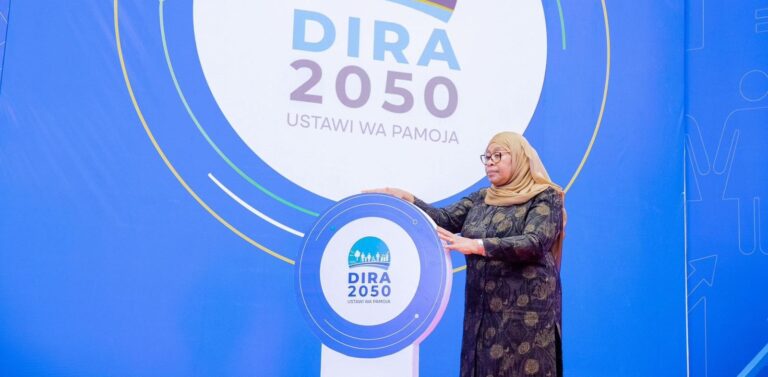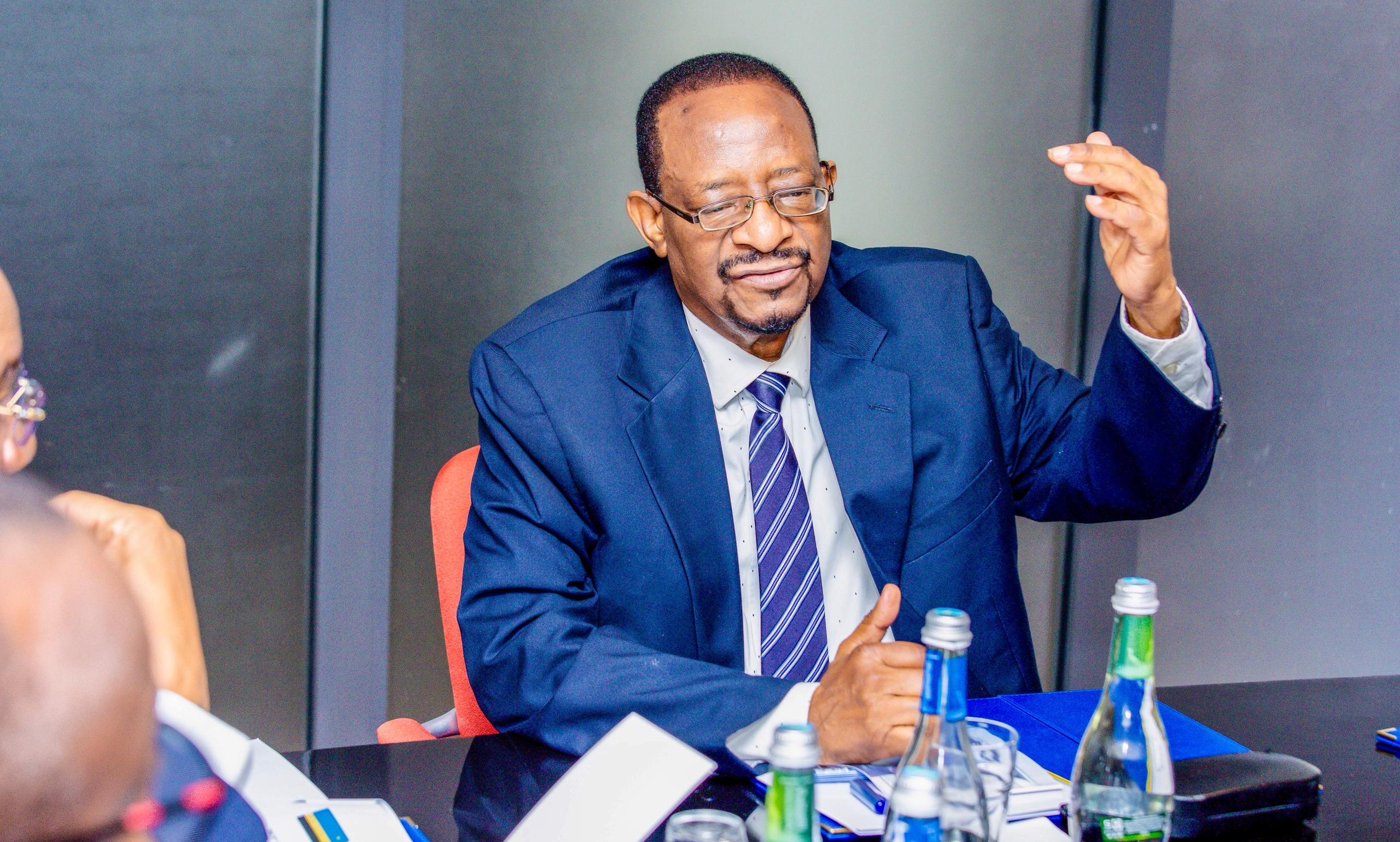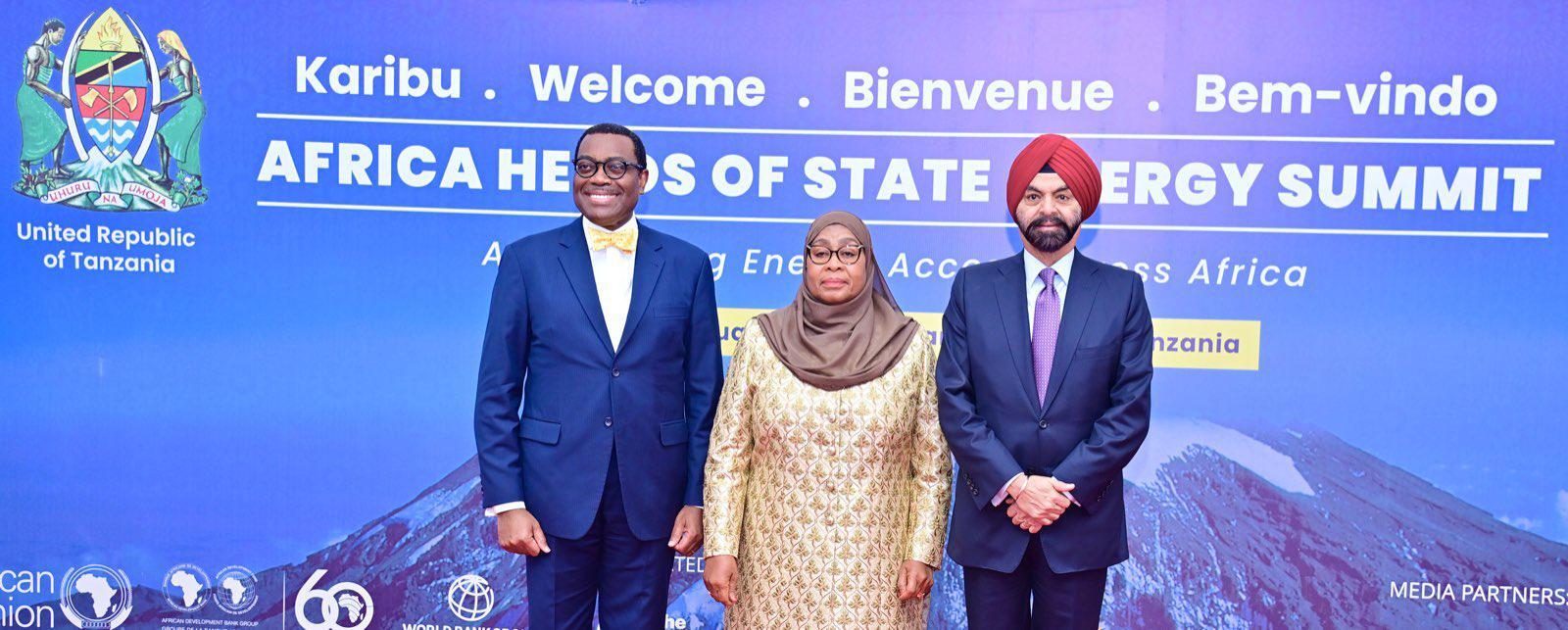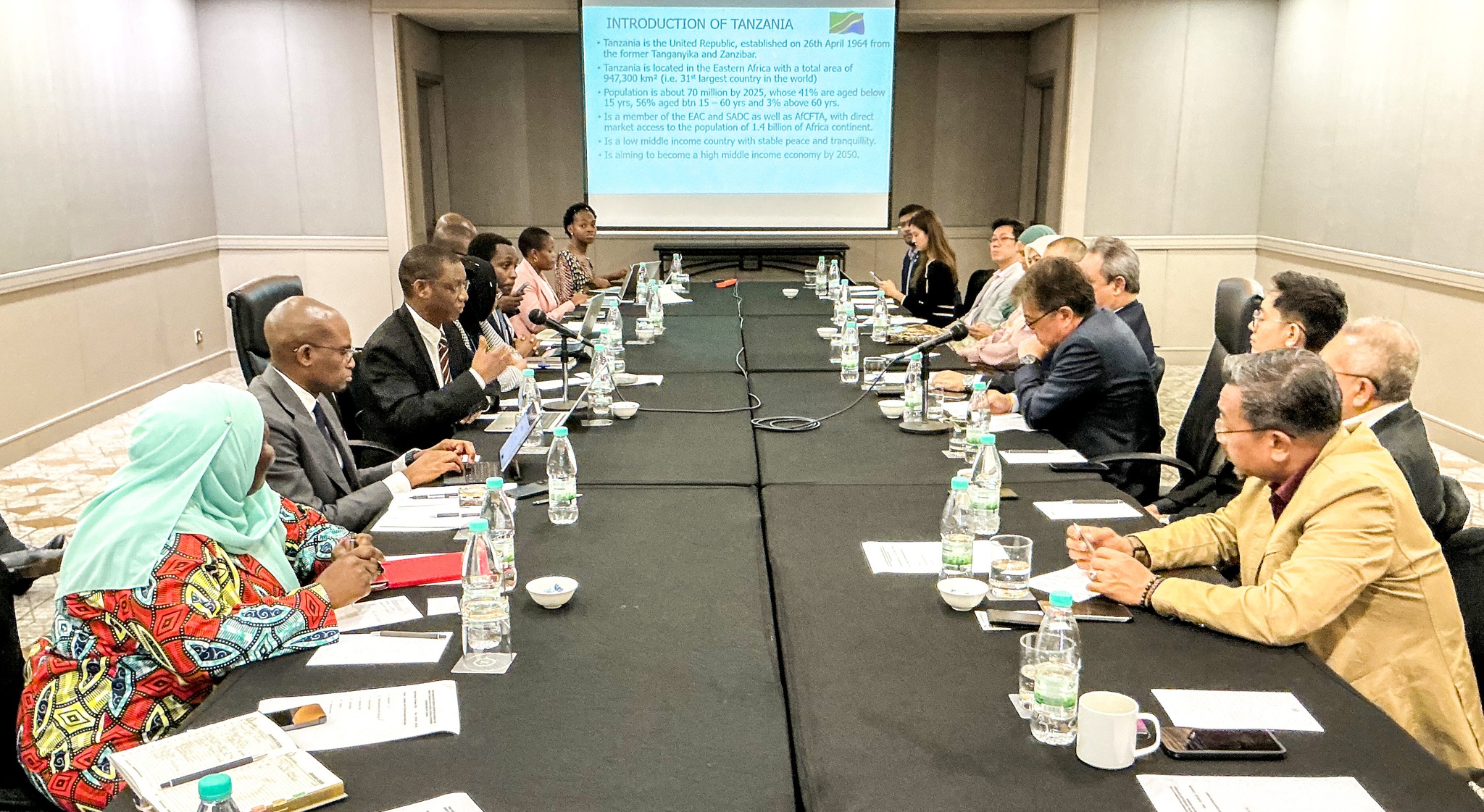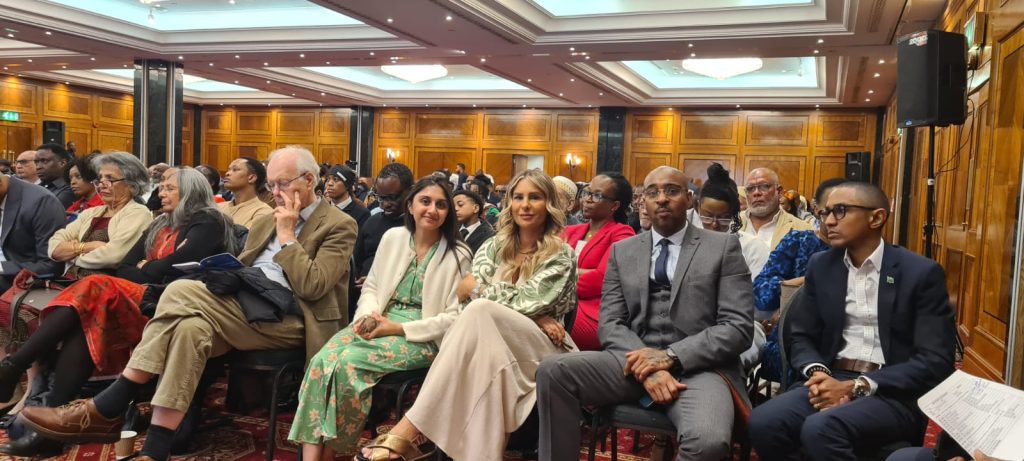Dar es Salaam. President Samia Suluhu Hassan has launched Tanzania’s new Development Vision 2050 that outlines Tanzania’s aspirations of becoming a high-income, inclusive, just, and self-reliant nation by mid-century.
The long-term national vision is to be officially referred to as Dira 2050 in both Swahili and English.
The grand launch, held at the Jakaya Kikwete Convention Centre (JKCC) in Dodoma on Thursday July 17, 2025, was attended by top government officials, dignitaries, members of the diplomatic corps, private sector representatives, and ordinary citizens.
In her keynote address, President Samia called on all Tanzanians to actively participate in the implementation of Dira 2050, which she described as a collective roadmap rooted in the values and ambitions of the people.
“The contents of the Dira 2050 have been drawn from the views and aspirations of Tanzanians themselves. We have reflected independently, written independently, planned independently, and we shall implement it independently,” she said.
The President underscored that Dira 2050 was informed by extensive public consultation and lessons from the country’s development journey since independence.
“This vision reflects the hopes of current and future generations and is grounded in our historical achievements and the realities of the contemporary world,” she said.
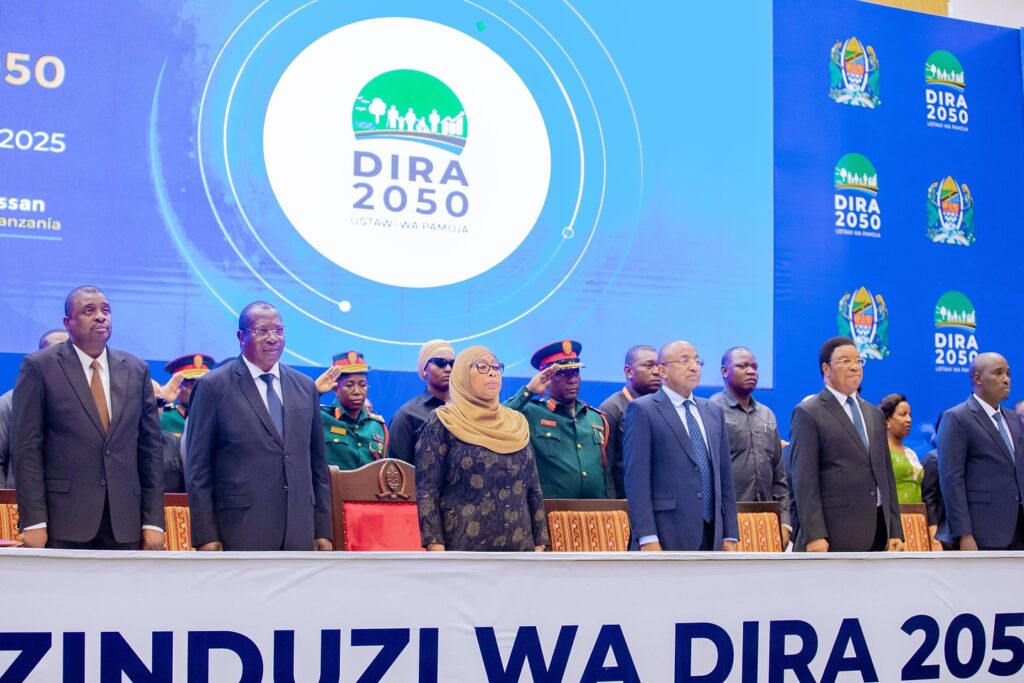
According to President Samia, the preparation of Dira 2050 considered global shifts, including economic system transformations, climate change, and demographic changes, especially the growing youth population and technological revolution.
She affirmed that Dira 2050 marks a turning point, offering a clear national direction that harnesses Tanzania’s human and natural resource endowments.
She also confirmed that Vice President Dr Philip Mpango, who is set to retire, will remain instrumental in overseeing the implementation of the new vision.
“Dr Mpango is a seasoned planner. He was part of Vision 2025’s formulation and implementation, and will continue to guide the execution of Dira 2050,” said the President.
The structure and aspirations of Dira 2050
Elaborating on the contents of the document, Minister of State in the President’s Office (Planning and Investment), Prof Kitila Mkumbo, described Dira 2050 as anchored on five foundational principles, four specific objectives, 18 targets, three strategic pillars, and five enablers.
He said the central ambition is for Tanzania to become “an inclusive, prosperous, just and self-reliant nation.”
The five principles include democracy, rights and freedoms; human dignity; peace and unity; natural wealth and resources; and national culture and ethics.
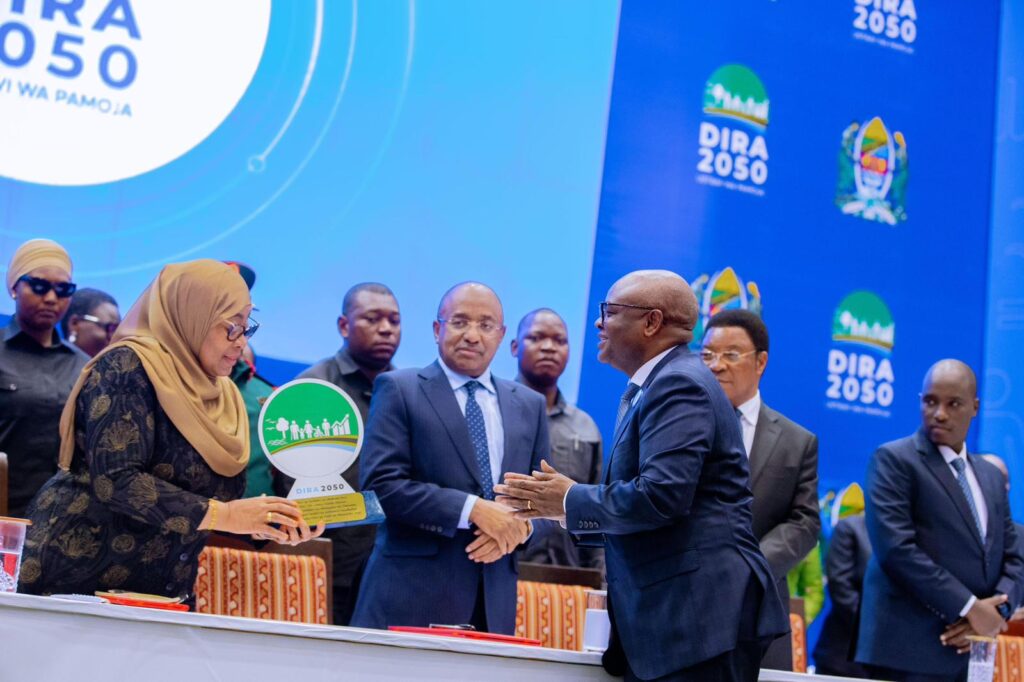
Objectives
The four core objectives of the Vision are achieving a high-level upper middle-income, inclusive and competitive economy with an annual average income (GDP per capita) of $7,000 and improving quality of life and welfare for all.
Other objectives are sustainable and productive use of natural resources while enhancing climate resilience and a digitally skilled society driving innovation and global competitiveness.
To achieve these objectives, Dira 2050 sets out 18 ambitious targets, include attaining upper middle-income industrial economy status with a GDP of $1 trillion; eradicating extreme poverty; becoming Africa’s leading food producer and among the top ten globally; raising life expectancy to 75 years.
Other targets are achieving zero maternal and under-five deaths; providing universal access to quality education, healthcare, social protection, safe water and energy; ensuring that at least 50 percent of Tanzanians are in decent formal employment.
And yet other targets are making Tanzania a digital society, with 70 percent of citizens digitally literate and 80 percent of government services accessible online; and becoming a continental leader in environmental conservation and gender equality.
Prof Mkumbo emphasised that Utawala, Amani, Usalama na Utulivu (Governance, Peace, Security and Stability) is the overarching foundation of the vision.
The three main pillars are economic transformation, human capital development and social wellbeing, and environmental sustainability.
Dira 2050 is also driven by five key enablers, which are integrated transport systems to position Tanzania as a regional trade hub, reliable and affordable energy access to fuel industrial growth and science and technology application to increase efficiency and competitiveness.
Other drivers are research and development to inform decision-making and sectoral transformation and digital transformation to expand citizen participation and enhance governance.
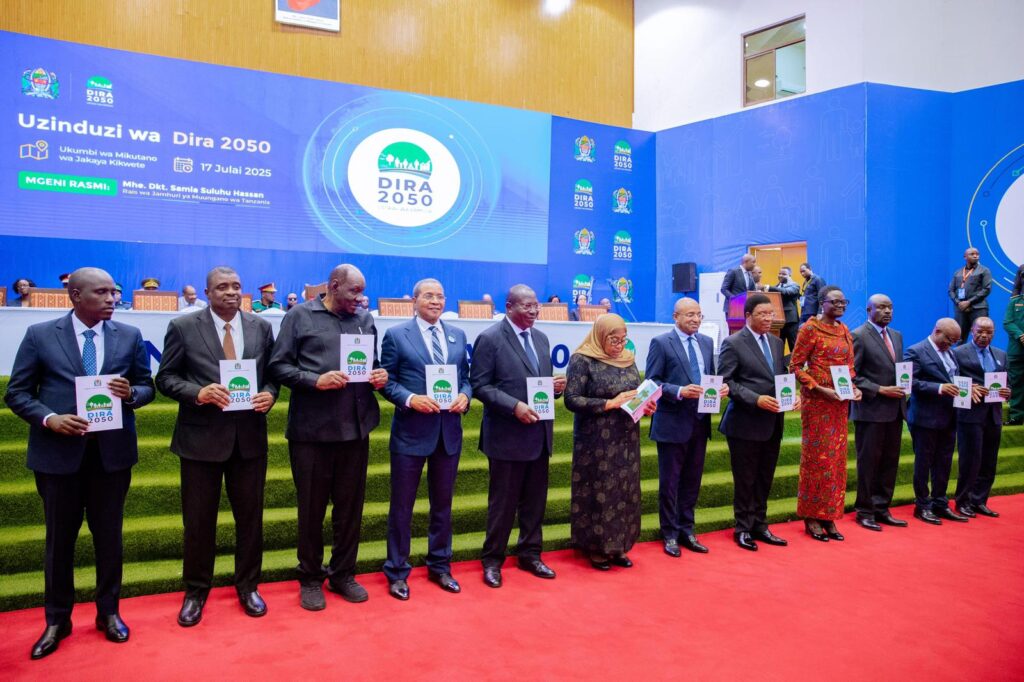
Implementation roadmap
To operationalise the vision, President Samia has directed the National Planning Commission and the Prime Minister’s Office to develop robust monitoring and evaluation systems and to establish clear performance indicators for every public institution.
All ministries have also been instructed to align their policies with the new vision and begin reviewing relevant legal and institutional frameworks.
The Attorney General’s Office and the Law Reform Commission have been tasked with spearheading legal reforms to enable effective implementation.
President Samia further directed the ministry of Information to develop a national communication strategy to raise public awareness and understanding of Dira 2050, stressing the importance of transparency in government reporting and citizen trust.
The vision also recognises the need for a whole-of-society approach, calling for collaboration across central and local governments, the private sector, faith-based and civil society organisations, development partners and every individual citizen.
The President concluded by urging religious institutions, the judiciary, and civil society to uphold values of integrity, responsibility, justice, and solidarity, which are crucial for achieving the aspirations of Dira 2050.
Meanwhile, the Planning Commission is already developing the Long-Term Perspective Plan (LTPP), which will serve as the national strategy for implementing Dira 2050.
Unlike with Vision 2025, where the LTPP came a decade later, the LTPP for Dira 2050 is expected to be finalised and presented to the next Parliament for approval immediately after the October 2025 General Election.
In parallel, the Commission is preparing the Fourth Five-Year Development Plan (FYDP IV), which will translate Dira 2050 into actionable five-year strategies. Both the LTTP and FYDP IV are being led by economist Dr John Mduma.

